Corvo, considered by UNESCO to be a World Biosphere Reserve, forms, together with the island of Flores, the Western Group of the Azores archipelago. Its origins are volcanic, and it is the smallest of the nine islands, with an area of only 17.1km2.
Corvo and Flores were discovered at the same time by the Portuguese explorer Diogo Teive, around 1452, and it was initially called Insula Corvi.
The only settlement on the island, Vila Nova do Corvo, is located in a lava fajã which forms the island’s main level surface. It is a picturesque and unusual village which features facades of black stone with white trimmed windows and doors, and narrow streets, locally called canadas, paved with rolled pebbles and weathered slabs. The use of wooden locks on the doors of the houses, made by the craftsmen of Corvo, is one of the remaining traditions that symbolises life on a peaceful island where everyone knows everyone else.
It is worth visiting the Church of Nossa Senhora dos Milagres (the island’s patron saint) which contains a picture - the Virgin and Child, of Flemish origin - and an Indo-Portuguese ivory crucifix, as well as the Corvo Visitors’ Centre.
Corvo, considered by UNESCO to be a World Biosphere Reserve, forms, together with the island of Flores, the Western Group of the Azores archipelago. Its origins are volcanic, and it is the smallest of the nine islands, with an area of only 17.1km2.
Corvo and Flores were discovered at the same time by the Portuguese explorer Diogo Teive, around 1452, and it was initially called Insula Corvi.
The only settlement on the island, Vila Nova do Corvo, is located in a lava fajã which forms the island’s main level surface. It is a picturesque and unusual village which features facades of black stone with white trimmed windows and doors, and narrow streets, locally called canadas, paved with rolled pebbles and weathered slabs. The use of wooden locks on the doors of the houses, made by the craftsmen of Corvo, is one of the remaining traditions that symbolises life on a peaceful island where everyone knows everyone else.
It is worth visiting the Church of Nossa Senhora dos Milagres (the island’s patron saint) which contains a picture - the Virgin and Child, of Flemish origin - and an Indo-Portuguese ivory crucifix, as well as the Corvo Visitors’ Centre.
Near Ponta Negra, in Alto dos Moinhos, the sea’s edge is adorned by small windmills. Unlike those on other islands in the Azores, these are of Mediterranean influence, more similar to those found in mainland Portugal. They have a conical body, with a mechanism that makes the timber cupola rotate, so that the sail follows the direction of the wind.
It is six kilometres, always rising, from Vila Nova do Corvo to the Caldeirão, the pride of the island. Along the way, you will see the low walls that divide the properties, long lines of hydrangeas and the black shapes of the "palheiros” (haystacks), cottages made of basalt in which tools and fodder used to be kept.
On arrival at the Monte Gordo Viewpoint, you will be enraptured by the unique landscape of the Caldeirão, which together with its Lagoon, forms the main element of the landscape of the island. This volcanic caldera, the result of the collapse of the top of Corvo’s central volcano has an elliptical shape with a depth of 305 metres and the interior is occupied by the shallow Caldeirão lagoon and several small volcanic cones that outline the body of water and many say imitate the layout of the Azores.
To the Southwest, two very curious rock formations appear, called Cavaleiro and Marco.
From the Pão de Açúcar Viewpoint, on the hill of the same name, you have an excellent panoramic view not only over the island itself and Vila Nova do Corvo, but also across to the island of Flores.
The entire island is surrounded by high, sheer cliffs and its highest point is the Morro dos Homens, located at the southern edge of the Caldeirão, at 718 metres above sea level.
A boat trip around the island is an unforgettable experience, revealing its most inaccessible areas, and allowing you to see the landscape, a large number of seabirds and even whales or dolphins.
These are views not to be missed!
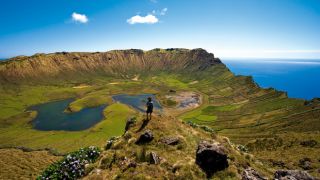









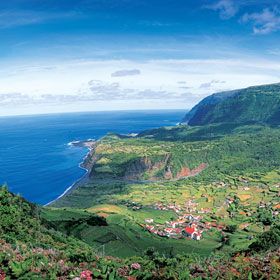
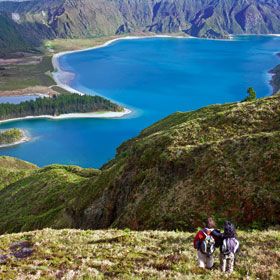

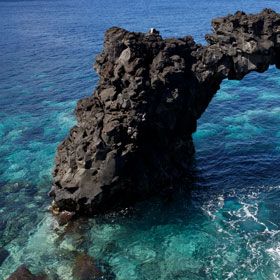

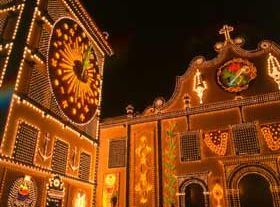
 Explore
Explore 
 Remember and Share
Remember and Share 


